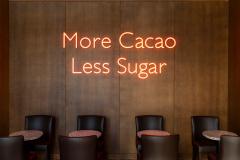Excitement was running high, as about 100 students and 10 staff embarked on a marathon journey across the channel to discover what life was really like for those courageous soldiers that faced the trenches in World War I.
Even after getting up in time to get to school at 6:15 and with a gruelling coach journey ahead, nothing could dampen the enthusiasm of the students as they boarded the coach and set off. Ten hours and a channel crossing later and we glimpsed our first sight of the chateau we would be staying at for the next few days.
The next morning and the two groups departed for their separate activities with group one visiting the Somme area and group two heading over to Ypres. The first stop for group one was the Albert trench museum, which was situated in a network of tunnels under the Albert Cathedral. This provided our first true insight into the horrors of the First World War and lent us perspective when considering the scale of deaths.
Next it was on to Ulster Tower where one of the only successful regiments to break through on the first day of the Battle of the Somme are commemorated. Whilst there, we saw some excavated and re-constructed trenches that helped us appreciate life on a day to day basis for soldiers.
Another stop on and we reached Newfoundland Park, where some of the heaviest casualties were suffered on the first day of the Battle of the Somme. It had a really moving and sombre atmosphere and as we walked around the Park it was a time for quiet reflection. After that, we visited the Lochnagar Crater, a massive hole measuring 90 feet deep and 130 feet across, that was made when a mine blew up in the middle of no-mans land on the first day of the Battle of the Somme. Finally we visited Thiepval Memorial to the missing. With over 73,000 names commemorated on this one memorial, it was quite a solemn site. We performed our own ceremony of remembrance here.
The next day was spent exploring the area in and around Ypres with visits to the Flanders Fields Museum in the Ypres Cloth Hall, Essex Farm Cemetery, where John McCrae's 'In Flanders fields' the poem was written, Vancouver Corner which commemorates the first use of poison gas.
Perhaps most harrowing of all was Langemark Cemetery, one of only four German cemeteries in the region. In this cemetery there were about 45,000 names commemorated, 25,000 in a mass grave. The largest British cemetery in the world, Tyne Cot, which we also visited, only has just over 11,000 buried there but it is much larger than Langemark. This helped us all to understand that although we view the Germans as the enemy in World War I, they were suffering the same as the Allies.
To put the icing on the cake after a fantastic day, we had time to explore Ypres and the amazing chocolate and waffle shops in the town square.
We had such a great time and will remember what we saw for many years to come.
Member post by Sophie Kraunsoe, Year 10 student at Wilmslow High School.

















